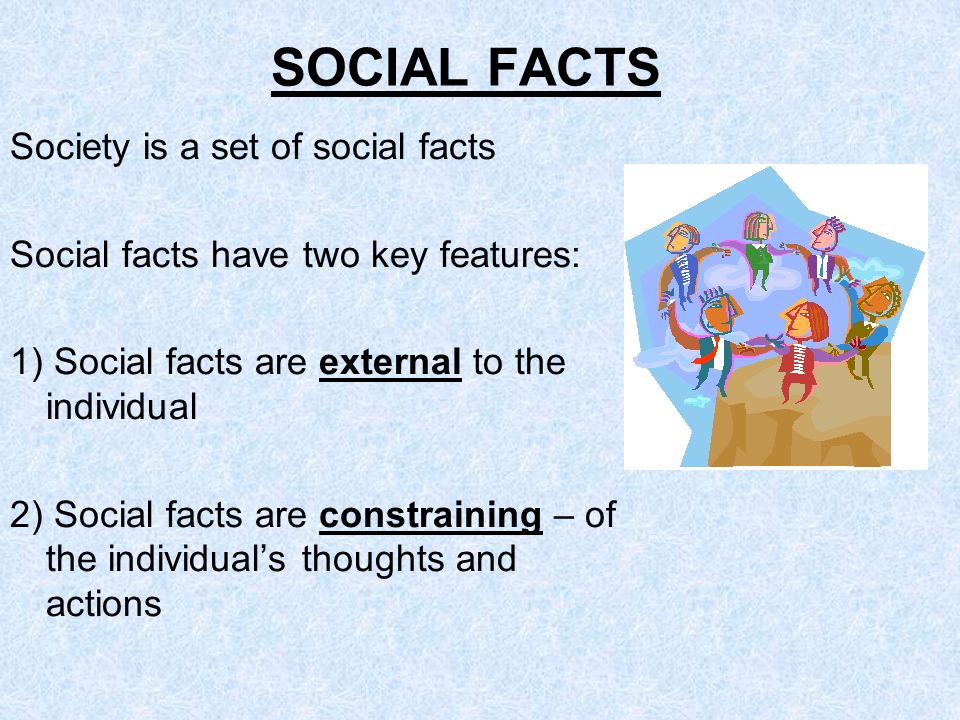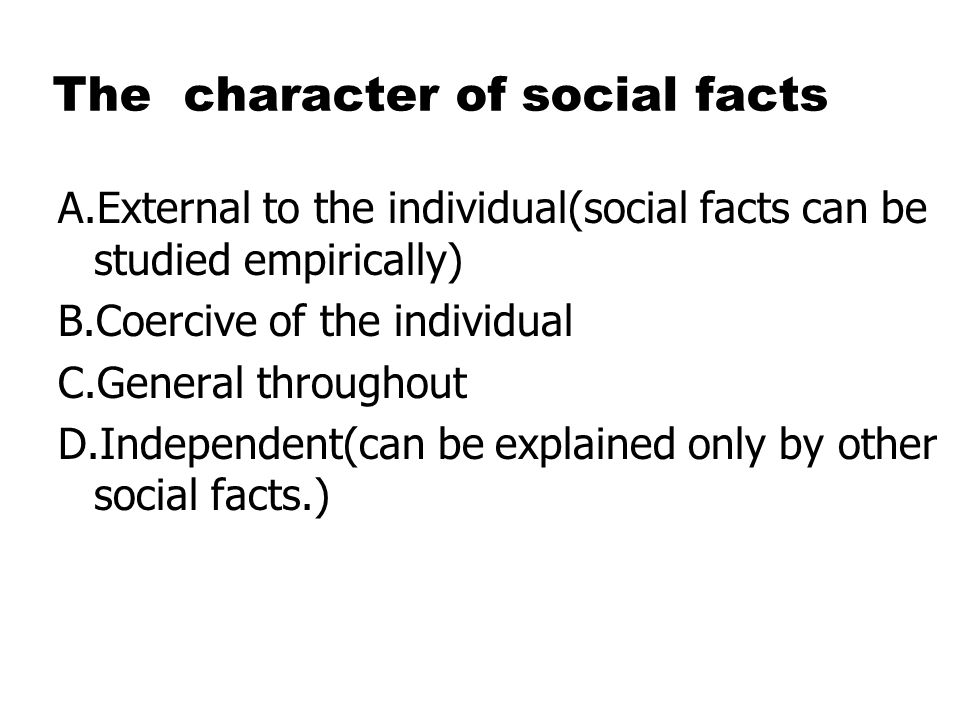Social facts are elements of a society that shape the behavior and beliefs of its members. They are the shared norms, values, and institutions that exist within a particular culture or community. They are the external and objective constraints that shape the way individuals think and act within a society.
Social facts are often studied in the field of sociology, which is the study of social behavior and social structures. Sociologists believe that social facts play a significant role in shaping the behavior of individuals within a society. They argue that social facts are not simply the product of individual choices, but are external and objective forces that shape and influence the behavior of individuals.
Some examples of social facts include cultural norms, laws, and institutions. These are the shared expectations and rules that shape the way people behave within a particular society. For example, in most societies, it is considered a social norm to greet others when you meet them, to be polite and respectful to others, and to follow the laws of the land. These norms and laws are enforced by institutions such as the legal system, which helps to ensure that people adhere to these expectations.
Another example of a social fact is the role that education plays in shaping the behavior and beliefs of individuals. Education helps to transmit cultural values and norms from one generation to the next, and it also plays a role in shaping the way people think and act. For example, in many societies, education is seen as a way to improve one's social standing and economic prospects, and as a result, people may be more likely to value education and work hard to achieve academic success.
Social facts can also be found at the micro level, such as within families and social groups. For example, a family may have certain expectations for how its members should behave, and these expectations can shape the behavior and beliefs of individuals within the family. Similarly, social groups may have their own norms and values that shape the behavior of their members.
In conclusion, social facts are the external and objective elements of a society that shape the behavior and beliefs of its members. They include cultural norms, laws, institutions, and other shared expectations and rules that shape the way people think and act within a particular culture or community. Sociologists believe that social facts play a significant role in shaping individual behavior and are an important aspect of social life.
What Is Social Insurance?

They have learned how they should behave and what they should sound or look like. SNHU does it by offering affordable and innovative educational refugee camps in Africa. New York: Aldine de Gruyter. Thousand Oaks, CA: Sage Publications. A comparable Get a Britannica Premium subscription and gain access to exclusive content. Indeed some of these ways of acting or thinking acquire, by dint of repetition, a sort of consistency which, so to speak, separates them out, isolating them from the particular events which reflect them. Since they maintain that the individual is completely autonomous, it seems to them that he is diminished every time he is made aware that he is not dependent on himself alone.
Social facts as things

They are indeed not inaccurately represented by rates of births, marriages and suicides, that is, by the result obtained after dividing the average annual total of marriages, births, and voluntary homicides by the number of persons of an age to marry, produce children, or commit suicide. What interests me, and what I hope interests you, is our collective power to influence social change. We accept change as inevitable, and it is, end of story, right? Every individual drinks, sleeps, eats, or employs his reason, and society has every interest in seeing that these functions are regularly exercised. The Structure of Social Action. Collective custom does not exist only in a state of immanence in the successive actions which it determines, but, by a privilege without example in the biological kingdom, expresses itself once and for all in a formula repeated by word of mouth, transmitted by education and even enshrined in the written word. On the negative side, a high rate of vertical mobility may produce individual and societal. These emotions may even perhaps fill us with horror, so much do they go against the grain.
Fact Definition & Meaning

Other sociologists say that negative conditions and behaviors should be considered a social problem even if they receive little or no attention; these sociologists would thus say that rape and sexual assault before the 1970s were a social problem. Brinkerhoff, David, Lynn White, Suzanne Ortega, and Rose Weitz. In other cases the constraint is less violent; nevertheless, it does not cease to exist. Convening gatherings of people, educating students in classrooms and online, and supporting activists who put themselves in the forefront of advocating for social change are how Global Citizens Circle, Southern New Hampshire University and The Social Change Initiative use their influence and power to direct change towards a more equitable and inclusive society. Because the social entity is making claims about all these matters, this aspect of Stage 1 is termed the A social problem emerges when a social change group successfully calls attention to a condition or behavior that it considers serious.






